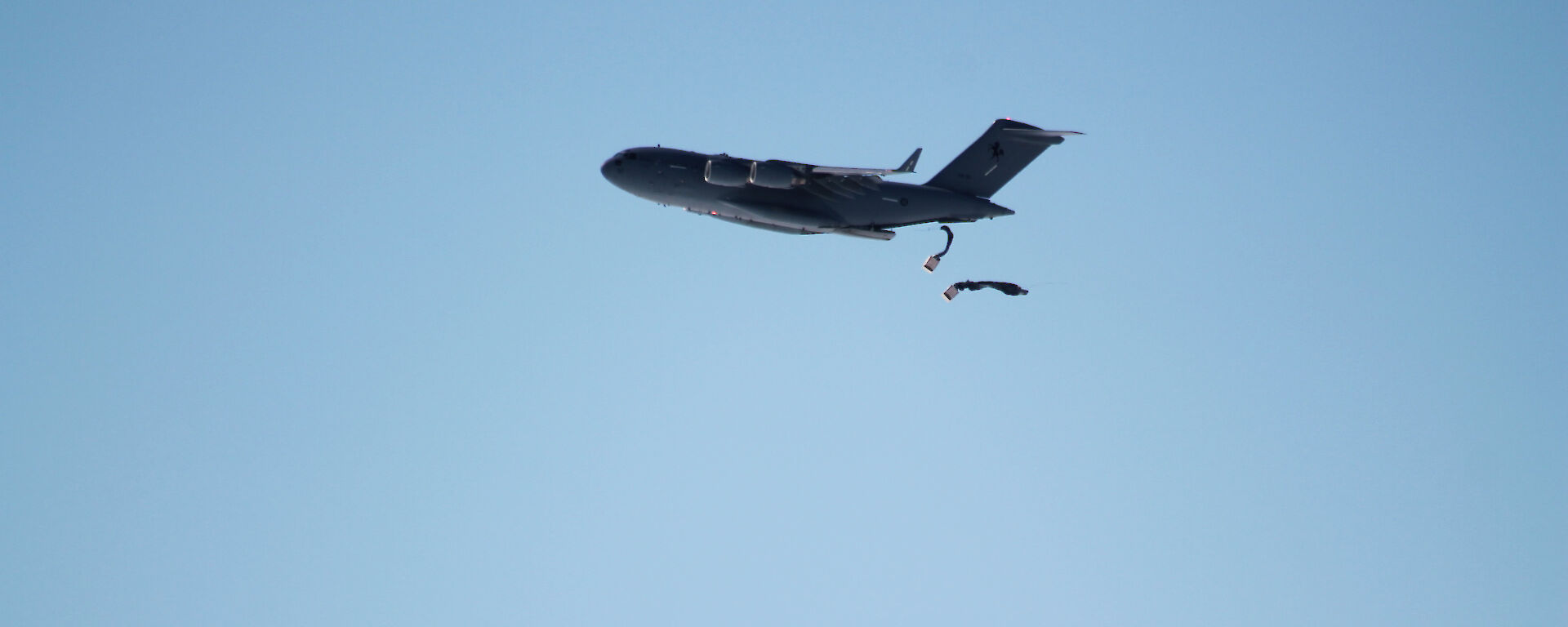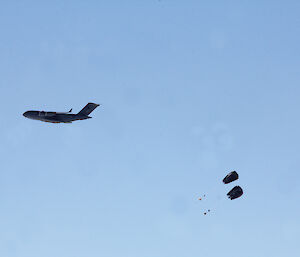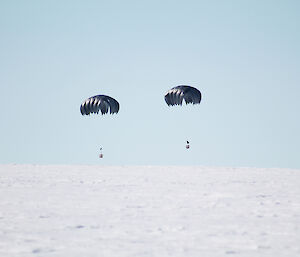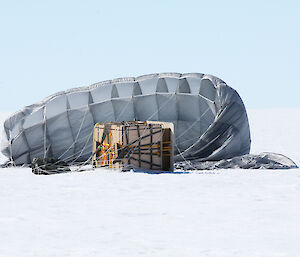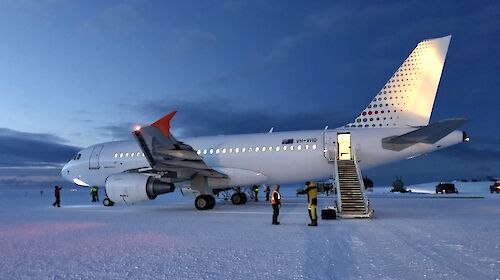For the first time, two new parachute systems have been successfully used to drop supplies to an Australian Antarctic station.
Earlier this week, the low-cost and precision-guided parachutes were deployed near Casey research station by a Royal Australian Air Force (RAAF) C-17A Globemaster III.
Australian Antarctic Division Supply Services Manager, Matt Filipowski, said these aerial delivery methods are a new capability.
“Airdrops are routinely used by polar nations, but the addition of these low-cost and precision-guided parachutes is a first for Australia in Antarctica,” said Mr Filipowski.
“We had really good weather conditions on Monday and were able to undertake five individual drops onto the ice, with all completed as planned and the loads landing safely.”
The parachutes and loads were recovered by a team of expeditioners from nearby Casey research station.
The Low Cost Aerial Delivery System (LCADS) provides a cost-effective means of delivering airdrop cargo to Antarctica.
When recovered after the drop, LCADS can be packed down into a smaller package than traditional parachutes, reducing effort for teams recovering the equipment from the field.
The Joint Precision Aerial Delivery System (JPADS) is a GPS-guided system which steers the parachute and provides airdrop delivery with high accuracy.
This has the potential to be used to resupply remote deep field camps, tractor trains on inland traverses, or vessels stranded in sea-ice.
“The guided parachute is controlled by a machine that guides and pulls on the risers, as the ropes are called, to actually steer the parachute, doing what a human would normally do,” said Mr Filipowski.
The precision guided system allows drops from higher altitudes, giving a number of advantages.
“If needed, we can reach areas near sensitive wildlife populations without the impact of aircraft noise.”
During this trial, environmental observers located at nearby protected areas reported no disturbance to wildlife.
“JPADS also lets us fly a longer distance with the parachute and get it right on target from a long way away.”
“Remarkably, the precision-guided parachute dropped from 10,000 feet at a speed of 270km/h and landed its cargo of foodstuffs within 30 metres of the target,” Mr Filipowski said.
Another key outcome of the airdrop trials was to train ground crews in the methods and equipment required for using these aerial delivery systems in Antarctica.

